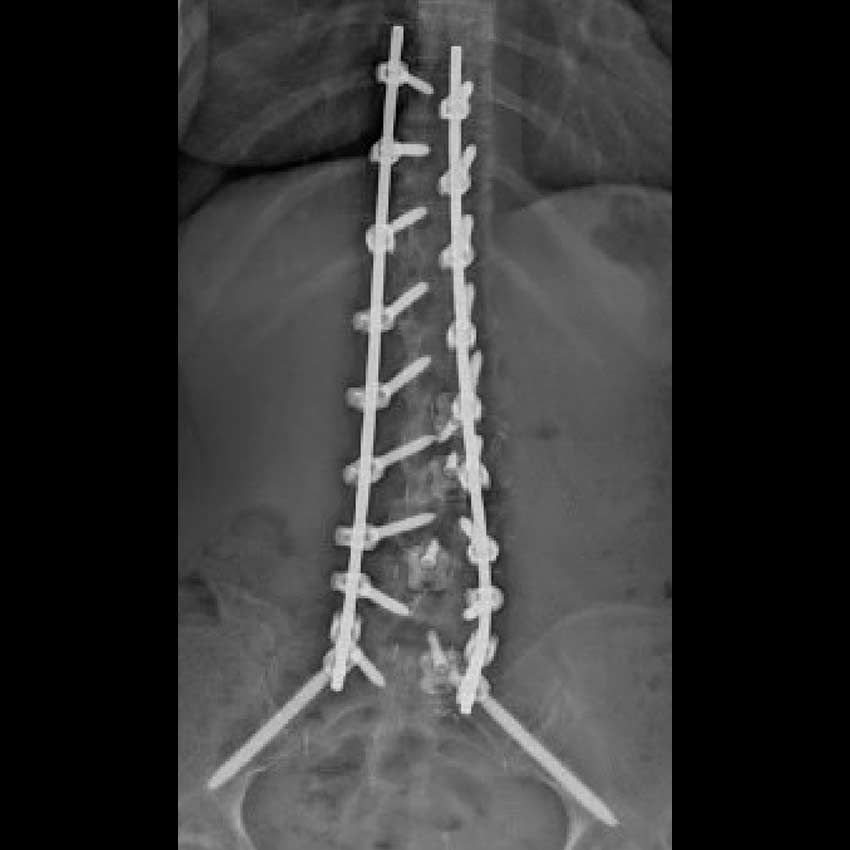Spinal Implants
While most spinal conditions do not require surgery, there are times when surgery is necessary. Implant systems utilizing specially designed spinal instrumentation are often used in these surgical procedures. The implants are used to facilitate fusion, correct deformities, and stabilize and strengthen the spine.
Conditions that often require instrumented fusion surgery include slippage of the spine (spondylolisthesis), chronic degenerative disc disease, traumatic fracture, and other forms of spinal instability including scoliosis.
Implants: What are they?
Most spinal implants are made of metals such as titanium, titanium-alloy or stainless steel; some are made of non-metallic compounds. They come in many different shapes and sizes to accommodate different patients of all ages.
Scientists and surgeons around the world are constantly working to develop and refine implants to improve patient outcomes. In recent years there have been huge advances, including the advent of rod and screw systems that enable surgeons to 3-dimensionaly correct spinal deformities; the development of special plates and cages that help promote spinal fusion; and the creation of small but strong implants for children.
Spinal implants can be summarized into several groups:
- Rods – one of the original implants used in the spine. Rods are used, along with screws and hooks, to immobilize involved spinal levels, and to contour the spine into correct alignment. The rods are strong, yet have some flexibility so that the surgeon can shape the rod to match the contours of the patient’s spine.
- Pedicle Screws - these specially designed screws are carefully implanted into the pedicles of the spinal vertebrae. Screws can be implanted into the cervical, thoracic and lumbar spine as well as the pelvis. Screws provide strong "anchorage" points to which rods can be attached. Rods can then be contoured to correct deformities, and to facilitate fusion.
- Hooks – used with rods and other implants to anchor them to vertebrae.
- Plates - often used in the cervical spine. Plates are manufactured to conform to the contour of the spine and are held in place by screws set into adjacent vertebrae. When the plate requires adjustment, a contouring tool is used to customize the fit to the patient’s anatomy.
- Cages – often called “interbody” cages because they are most often placed between two vertebrae. Cages are small hollow devices with perforated walls. Bone graft or BMP is often packed into the cage to promote bone growth between the adjacent vertebrae. Cages are used to restore lost disc height resulting from a collapsed disc and to relieve pressure on nerve roots.
What we use
We choose implants very carefully to ensure they are the best choice for the specific patient. We tend to use titanium implants as they are strong, light and, unlike stainless steel implants, can be used with MRIs. When suitable, we use radiolucent materials such as carbon fiber or PEEK cages. These implants cannot be seen on a scan but allow us to see if bone is forming and fusion is taking place.
The Future
Robotic assisted surgery and intra operative 3D CT imaging are available. These enabling technologies can increase the safety and accuracy of implant placement.
Conclusion
In the past 20 years, there have been major breakthroughs in the development of spinal implants. The result is better treatment for patients. We utilize the implants that are most suitable for each individual patient. We are also involved in the research and development of new implants that will carry the field forward in the coming years.
